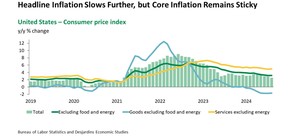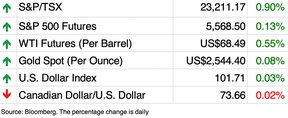What if once again we are in a world awash with oil?
Article content

Oil prices took a frightening turn this month, in what one commodities analyst described as “a complete bloodbath.”
The descent that saw prices for Brent crude drop below US$70 for the first time in three years was driven mainly by concerns about demand after the world’s top two oil consumers, China and the United States, showed signs of slowing.
Today the International Energy Agency warned that oil consumption had dropped to the slowest rate since demand crashed during the early days of the pandemic.
Advertisement 2
Article content
Investors are right to worry about demand, says Capital Economics, but there is a bigger question mark hanging over the oil market right now — supply.
OPEC+ announced last week that it would delay the unwinding of production cuts until December in an effort to bolster falling prices.
But there is a chance that these oil-producing nations could change tack and start ramping up production, said David Oxley, Capital’s chief climate and commodities economist — and that’s a key downside risk to oil prices.
Since last 2022, Saudi Arabia has led OPEC+ in cutting oil output, with its production falling from 11 million barrels per day to 8.9 million.
Crown prince Mohammed bin Salman‘s approach since he took tighter control of oil policy has been to limit supply to drive up prices, but it wasn’t always so.
Up until 2016, Saudi’s oil policy led by then oil minister Ali Al-Naimi focused on retaining market share. When oil prices started to fall in mid-2014, OPEC ramped up production to keep prices low and squeeze out higher-cost producers, mainly in U.S. shale oil which was booming.
Article content
Advertisement 3
Article content
And to a certain extent it worked. Both the United States’ and Canada’s oil industries still bear the scars of the 2015 meltdown.
Saudi Arabia’s oil capacity is 12.5 million barrels a day, leaving 3.6 million barrels spare right now, says Capital.
“If Saudi Arabia were to suddenly turn on the taps and ramp up output to this level, it would almost certainly result in a fall in oil prices as the global oil market flipped into a large surplus,” said James Swanston, Middle East and North Africa economist.
But why would they do that?
Capital says Saudi needs oil prices at US$105 per barrel and $85 to balance its budget and current account position, respectively, and at current prices it’s running a deficit on both.
“We’ve argued before that the swing to a current account deficit could prove a turning point for policymaking and, as we see it, there are three main routes the Kingdom could take with regards to oil output over the coming months,” said Swanston.
Saudi could continue on the path it’s on and slowly increase production, but this won’t add much to the Kingdom’s coffers.
It could make deeper cuts, but even this would do little to boost revenues unless oil prices rebound above US$100, which Capital considers unlikely.
Advertisement 4
Article content
Slashing output would also further erode Saudi’s market share, which has already fallen from almost 11 per cent of the global oil market in 2022 to 8.8 per cent now.
The Kingdom’s gross domestic product would take a hit. Capital estimates that every 500,000 barrel drop in output shaves 1.5 percentage points off Saudi’s annual GDP growth.
“Meanwhile, if Saudi Arabia tries to push other OPEC+ members to cut oil output further too, that would run the risk of renewed tensions with the likes of the UAE, which is keen to raise oil output,” said Swanston.
Or it could flood the market.
If Saudi aggressively raises oil output it would boost GDP substantially and oil revenues would remain about the same even if the oil price sank to US$50.
“We estimate that, all else equal, raising production to 12.5 million bpd would increase the size of the Saudi economy by 11.5 per cent compared to 2023 levels,” said Swanston.
Capital’s central scenario is that Saudi Arabia will continue on the course it’s on and raise output gradually, “but if oil prices continue to struggle, Saudi officials will face a tough choice,” he said.
Advertisement 5
Article content
Sign up here to get Posthaste delivered straight to your inbox.


So long, half-point cut from the Fed.
The United States consumer price index out yesterday disappointed when core inflation, which excludes the more volatile components of food and energy, rose 0.3 per cent, the most in four months.
The hotter reading virtually wiped out market bets on a bigger rate reduction when the Federal Reserve meets next week. Trader still think the Fed will cut, however, and have fully priced in 25 basis points on Sept. 18.

Today’s Data: Canada building permits for July, United States producer price index
Earnings: Empire Co. Ltd., The Kroger Co., Adobe Inc.



Recommended from Editorial
-

Businesses at greater risk of payment fraud
-

Higher savings rate may not save Canadians from the mortgage cliff

The Phillips curve states there is an inverse tradeoff between unemployment and inflation. The latter seems to have come off the boil, pushing central banks to lower their rates, which often results in higher multiples and consumers spending more. But veteran investor Noah Solomon says that may not be the environment we’re heading into. Find out more
Advertisement 6
Article content
Are you worried about having enough for retirement? Do you need to adjust your portfolio? Are you wondering how to make ends meet? Drop us a line with your contact info and the gist of your problem and we’ll try to find some experts to help you out, while writing a Family Finance story about it (we’ll keep your name out of it, of course). If you have a simpler question, the crack team at FP Answers, led by Julie Cazzin, can give it a shot.
McLister on mortgages
Want to learn more about mortgages? Mortgage strategist Robert McLister’s Financial Post column can help navigate the complex sector, from the latest trends to financing opportunities you won’t want to miss. Plus check his mortgage rate page for Canada’s lowest national mortgage rates, updated daily.
Today’s Posthaste was written by Pamela Heaven, with additional reporting from Financial Post staff, The Canadian Press and Bloomberg.
Have a story idea, pitch, embargoed report, or a suggestion for this newsletter? Email us at posthaste@postmedia.com.
Bookmark our website and support our journalism: Don’t miss the business news you need to know — add financialpost.com to your bookmarks and sign up for our newsletters here.
Article content
Oil prices’ biggest risk might not be what you think
2024-09-12 12:09:32






